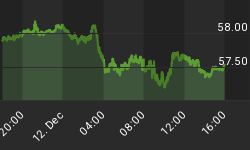The following is excerpted from a commentary originally posted at www.speculative-investor.com on 13th October 2013.
The Fed's mode of operation has drastically changed over the past 12 years. Prior to 2002 the Fed would tighten monetary policy in reaction to outward signs of rising "price inflation" and loosen monetary policy in reaction to outward signs of falling "price inflation", but beginning in 2002 the Fed became far more biased towards loose monetary policy. This bias is now so great that we are starting to wonder whether the Fed has become permanently loose.
The following chart comparing the Fed Funds Rate (FFR) target set by the Fed with the Future Inflation Gauge (FIG) clearly illustrates how the Fed has changed over the past two decades. Note that the Future Inflation Gauge is calculated monthly by the Economic Cycle Research Institute (ECRI) and should really be called the Future CPI Gauge, because it is designed to lead the CPI by about 11 months.

The chart shows that prior to 2002 the FFR tended to follow the FIG. After the FIG warned of rising "price pressures" the Fed would start hiking the FFR, and after the FIG started signaling reduced upward pressure on the CPI the Fed would start cutting the FFR. During 2002-2004, however, the Fed not only didn't hike its targeted interest rate in response to a sharp increase in the FIG, it continued to cut the FFR.
The Fed's decision to maintain an ultra-loose stance during 2002-2004 was the fuel for the real estate investment bubble and set the stage for the collapse of 2007-2009.
There was a lesson to be learned from what happened during 2002-2007, but the Fed apparently learned the wrong lesson. The lesson that should have been learned was: Don't provide monetary fuel for bubble activities, because the eventual economic fallout will be devastating. Unfortunately, the lesson that was actually learned by the Fed was: An economic bust can be avoided forever by keeping monetary policy loose forever. The result is that the divergence between the FFR and the FIG that arose during the first half of the last decade is nothing compared to the divergence that is now in progress. Moreover, the near-zero FFR doesn't do justice to the 'looseness' of the Fed's current stance, in that 4+ years after the end of the last official recession the Fed is still pumping money as if the US were in the midst of a financial crisis.
By the way, this year's small decline in the FIG suggests that there is not going to be a significant change in the CPI's growth rate over the next 6-12 months. If so, policy-makers at the Fed will probably conclude that they have plenty of leeway to maintain an ultra-loose monetary stance.
By ignoring investment bubbles and erring far more in favour of "inflation" than it has ever done in the past, the Fed is currently setting the stage for the mother-of-all economic busts. We don't have an opinion on when the bust will happen and how it will unfold, other than we do not expect it to happen within the next six months and we do expect that it will be very different to the bust of 2007-2009.
We aren't offering a free trial subscription at this time, but free samples of our work (excerpts from our regular commentaries) can be viewed at: http://www.speculative-investor.com/new/freesamples.html
















